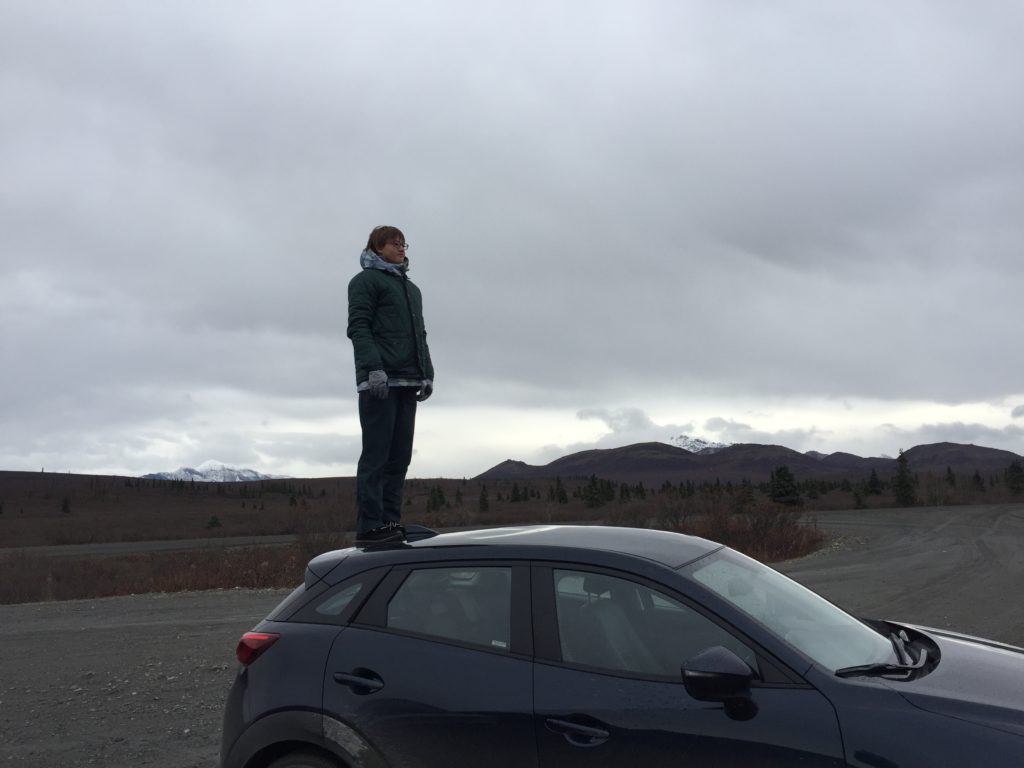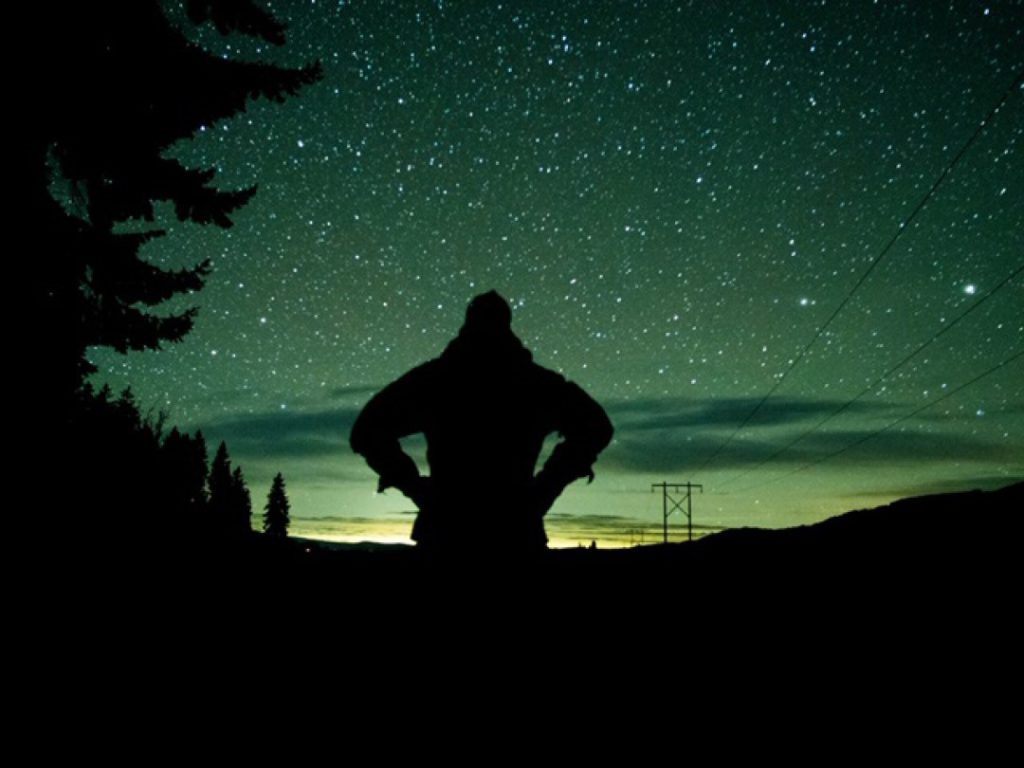Outdoor Family Adventure
Spring break is coming up quick. This year many families won’t be flying anywhere, which makes it a great time for a family road trip. A few years ago a friend of mine, Liz Rusch, took a very cool road trip—planned and led by her teen, Izzi—where they went on a journey in search of the Northern Lights. They traveled to Alaska and Montana, hoping to see it, but no luck. They returned home and figured out a way to see the aurora right in their home state of Oregon! Together they wrote a book for kids about their quest called A Search for Northern Lights, which gives families all the info they need to embark on their own aurora adventure.
I chatted with Izzi and Liz about what first got them interested in seeing the northern lights and how families can plan their own cool road trips.
About the authors
Izzi is a 17-year-old student who loves science, doing long jump, and playing the guitar, fiddle, and piano. They have written several books for kids and plan to write screenplays. Liz is an award-winning children’s book author (www.elizabethrusch.com).

What exactly are the Northern Lights?
Also called the aurora borealis, the northern lights are a beautiful, natural phenomenon that look like colorful waves of light in every color—green, purple, orange, pink, yellow, blue. They are caused by sun flares that send electrically charged particles into Earth’s magnetic field. When those particles hit the gases at the North and South poles, the process releases a glow, like a neon lightbulb. Auroras come in every possible color and no two auroras ever look the same. You are most likely to see the northern lights in high-latitude regions closest to the Arctic, like Alaska, Canada, Iceland, Greenland, northern Europe, northern Asia, and the northern U.S. states.
What got you interested in trying to see the northern lights?
Izzi: It was a combination of science and opportunity. I’ve always been really into science and when I decided to homeschool for 8th grade I really wanted to do something science-related out in the field. Our family took a road trip to see the solar eclipse in 2017, which was amazing and inspired me to find more opportunities to experience science in nature. That’s when I learned about the northern lights and decided to make it my mission to see them.
Where did you go on your quest?
Liz: First we went to Alaska for a week. But the weather was bad and we didn’t see it. Next, we took a train to Glacier National Park in Montana. We saw it there, but it was really small.
Izzi: Then when we were home in Oregon, not really expecting to see anything, we got an alert that there might be a visible aurora near us that night. So I checked Darksky.com to find the best place to view it.
Liz: Our whole family piled in the car, drove 2 hours east of the city to the middle of the wilderness. We literally just found some empty road and a clearing in the woods. That’s where we finally saw our first real northern lights.
Why did you co-write a book about your experience?
Liz: Seeing the northern lights was much harder than we expected. We thought it would be easy if we went to Alaska. People in Alaska see the northern lights all the time! But the reality was more challenging than that. You have to plan it for the right time of year, the right conditions, the right time of night. And you have to find a good viewing spot.
Izzi: Some people do get lucky on their first try, but that was not us. We had to search for it. Our journey became about the challenge of learning.
Liz: We had a lot of trial and error and eventually figured out a lot of stuff. It was such a cool experience for our family, we thought other families would like to know how to do it.
Why is searching for the northern lights a great trip for families?
Liz: One of the coolest things about searching for the northern lights is that you have to go to a dark place to do it. That gets you away from the hustle and bustle of the city. Anywhere that’s dark enough to see the northern lights is usually a beautiful wilderness area. The search is going to take you to places that are worth seeing anyway. Also, the northern lights only happen at night, but you’re still in that beautiful location during the day and there’s so much you can do with your family while you’re waiting for the darkness. For us, searching for the northern lights was fun, but it was all the other stuff that we did during the day that added even more fun and meaning to what we were doing. We did a ton of hikes, camped, rode in a dog sled… we even walked through the woods with reindeer. The northern lights are just the reason to go on the adventure.
Izzi: This kind of trip is a great way for kids to explore their passions. Yes, it was nice to spend time together as a family, but for me, it was about science. I loved learning about science out in the world. I loved the investigation and the adventure.
Liz: It’s also pretty fun because you’re packing snacks, making hot chocolate, getting ready for the night… it’s like camping, but your car is right there. You’re setting up this camping-like adventure from the comfort of your car. Then for hours you’re lying there snuggled in your sleeping bags, whispering together, looking at stars, watching for meteorites. It’s just a really fun activity for the whole family.
What’s your favorite memory from your trip?
Izzi: Well seeing the northern lights was amazing. But my other favorite memories are from Alaska. One day we got pulled by sled dogs in an old car chassis. It was their summertime workout and it was really fun. Another day we went on a walk in the woods with reindeer and I got to pet a baby reindeer that had horns covered in velvet.
Liz: One of my favorite memories was in Glacier National Park, lying beside a beautiful lake in our sleeping bags, drinking tea and talking. It was dark and beautiful.

How to plan a Northern Lights trip of your own
Liz and Izzi shared some basics about how to search for and (hopefully) find the northern lights in your area. You can find all this and more in their book A Search for the Northern Lights.
- Choose the best time of year
Spring and fall are great times to go. In summer the daylight hours are too long, and in winter it can also be really cold and stormy. Go now, or plan now for a trip in the fall. - Pick a where and when
The northern lights are visible across large parts of Alaska, Canada, and the northern U.S. To find where and when the aurora might be visible close to you, go to the University of Alaska’s Aurora Forecast website (www.gi.alaska.edu/monitors/aurora-forecast), which predicts northern lights activity for the entire northern region. - Get away from the city
Sunlight, moonlight, and city lights make it much harder to see an aurora. To have the best chance of viewing it, get out into nature, far from human lights. You can go to the Dark Sky Finder (www.darkskyfinder.com) to find a location with the darkest skies near you. - Time it right
The aurora tends to be biggest around midnight, bulging further down toward the lower 48 states. That means the hours just before and after midnight are the best for a possible aurora spotting. If you have little ones, put them to sleep and wake them up when the time is near. - Leave your white flashlight at home
It’s nice to have a red light instead of a white light. If you need to find something in the dark (your tea or whatever), white light makes your eyes not be adjusted to dark anymore. Red light keeps you adjusted to the dark. That was something we bought that we wouldn’t have had.” - Keep toasty
Dress warmer than you think you’ll need because you’ll be sitting still in the cold for many hours. Wear or pack long underwear, hat, gloves, and a thermos of hot drink.
Hey kids—this part’s for you!
Tips on getting your parents on board
Izzi: Take the initiative. If you bring it up and your parents say no at first, or are lukewarm to the idea, go and do some research. Find pictures, find articles, then come back to them and say, ‘We can see the aurora at this time, at this place.’ Take the initiative and figure it out.
I was driven by my love of science. You should follow your passion too! If you love art, tell them you want to do an art project about it. Or if you love nature, you could do a study of some aspect of nature in the area you want to go to. It will definitely help your cause if you have a good personal reason to do it.
Liz: You have so much information at your fingertips. You can find everything you need to know, then map out what you want to do and tell your parents, ‘Here’s a road trip we could do.’ Izzi: That’s what I did.
Liz: Yep, and I couldn’t say no.
Getting in your car and driving out into the darkness of nature is something we can do right now. Why not be inspired by Izzi and encourage your kids to plan or help plan a trip? Encourage them to research something they’re excited about—that could be seeing the Northern Lights, or it could be visiting a national park or petting a baby reindeer. Let them dig into that interest and learn more about it as they help figure out how you can get there and what all you can do while you’re there. Wherever you end up going, it will definitely be a family adventure to remember.